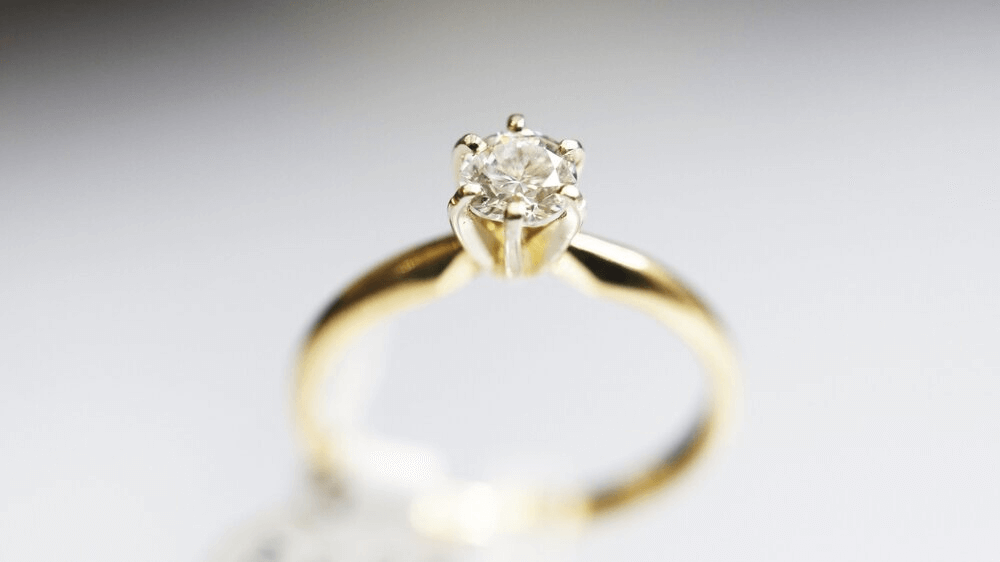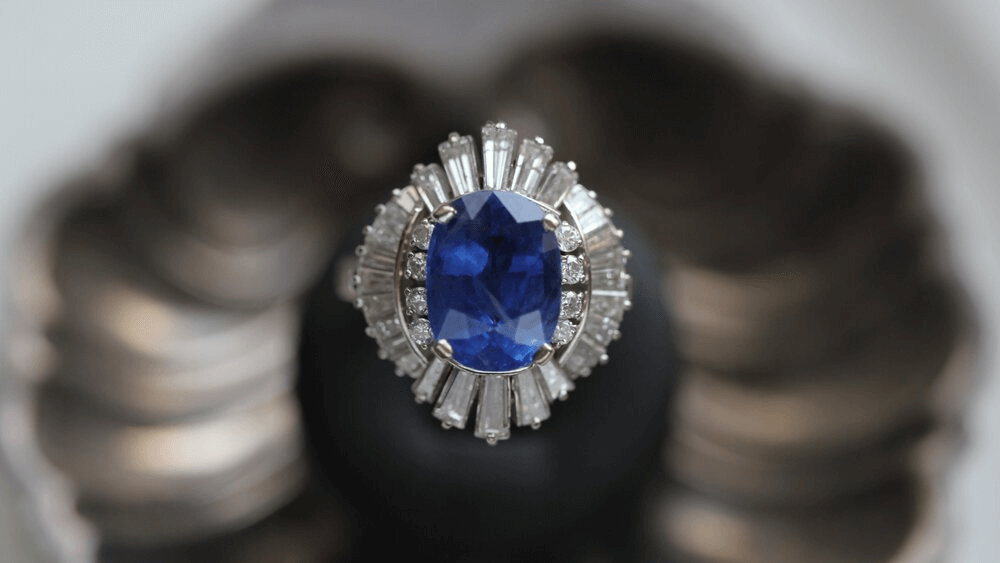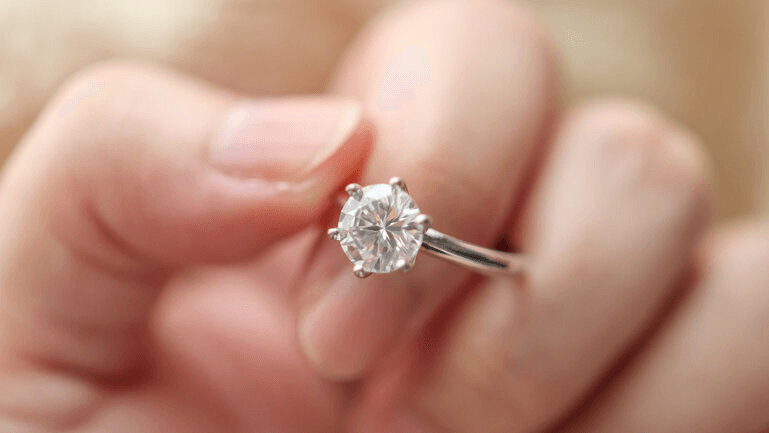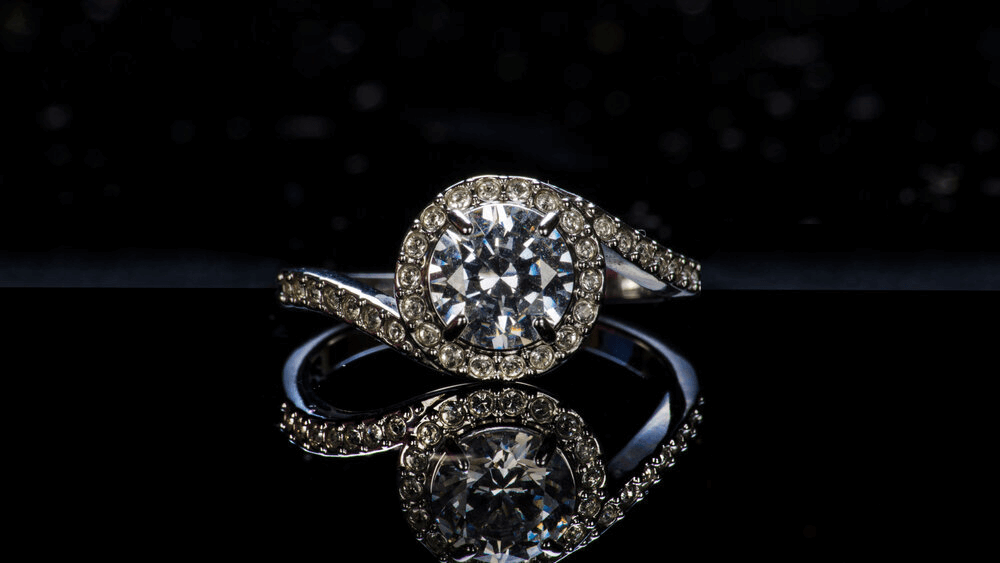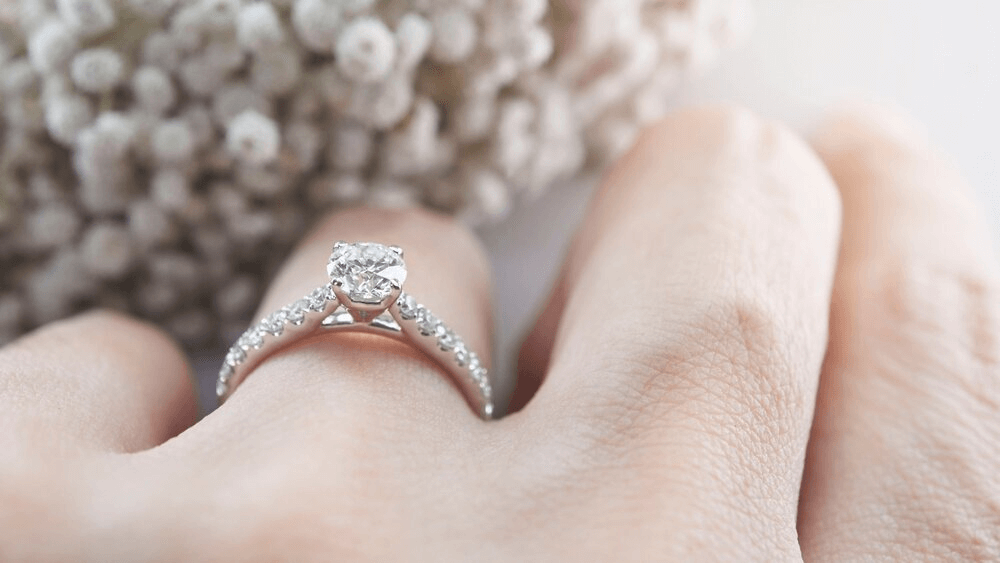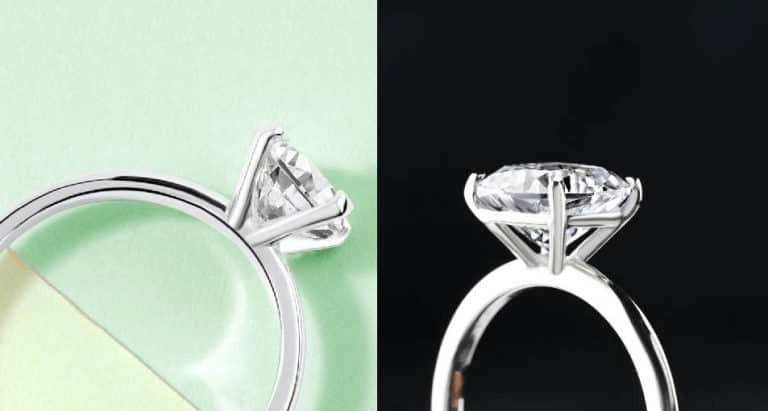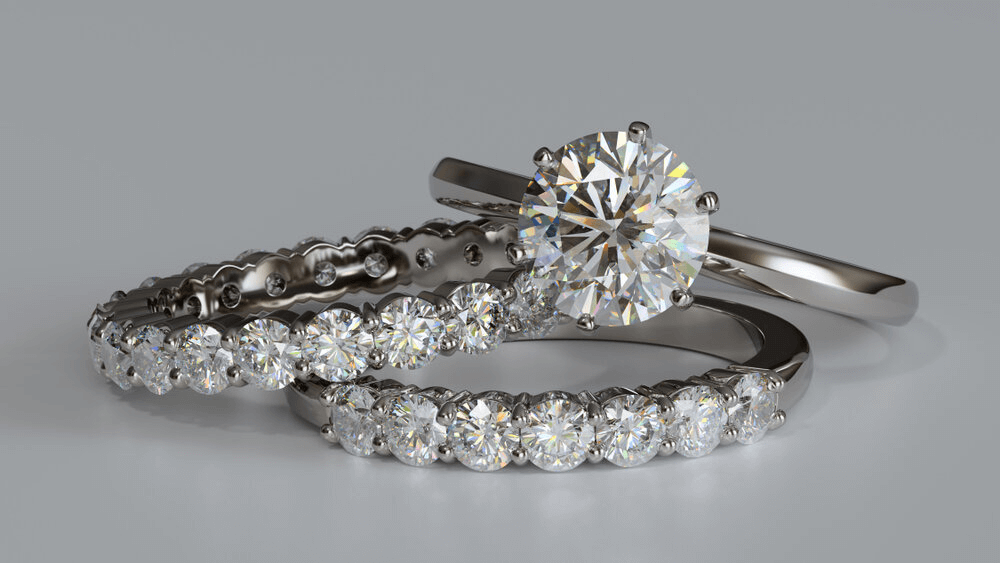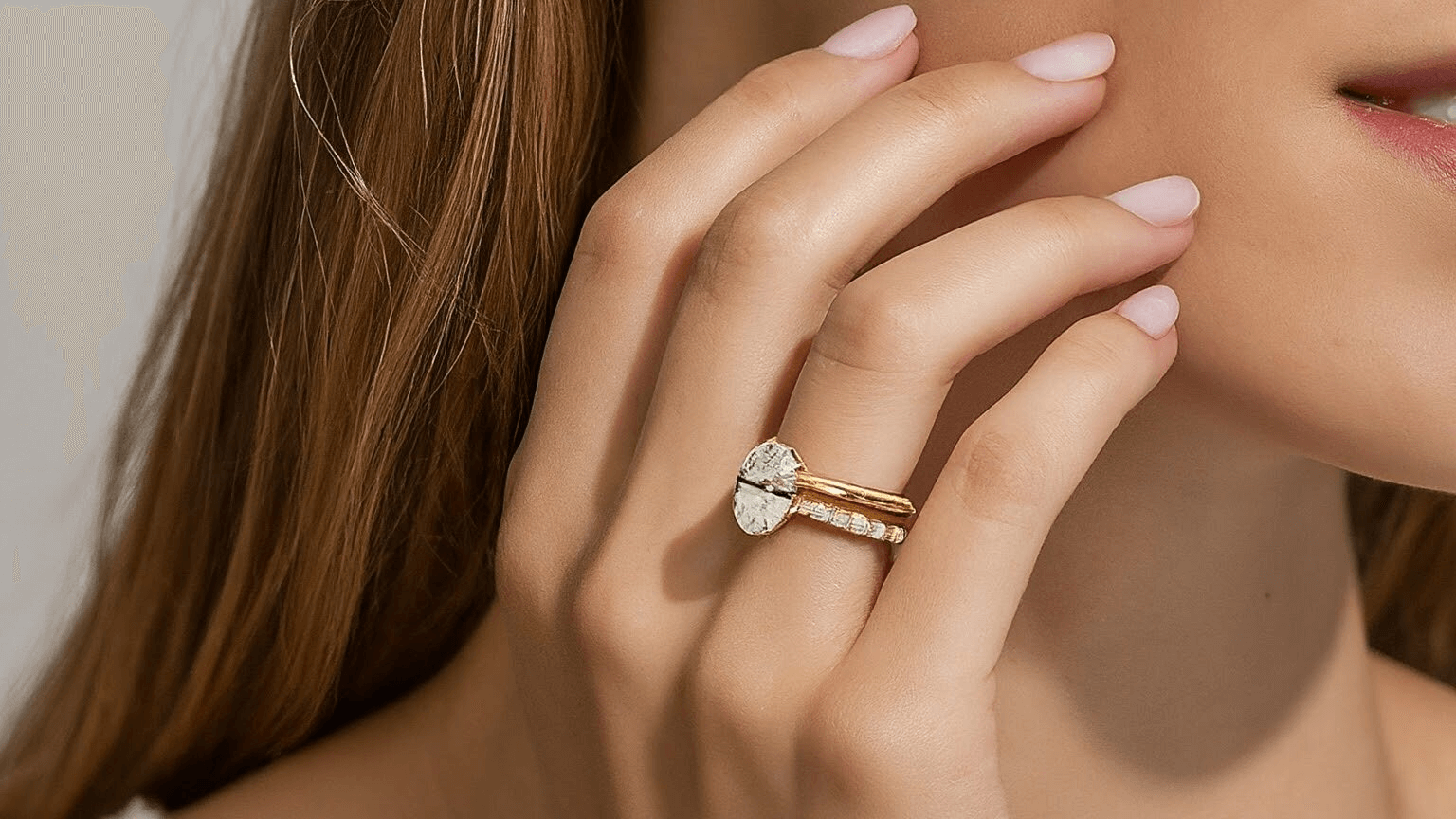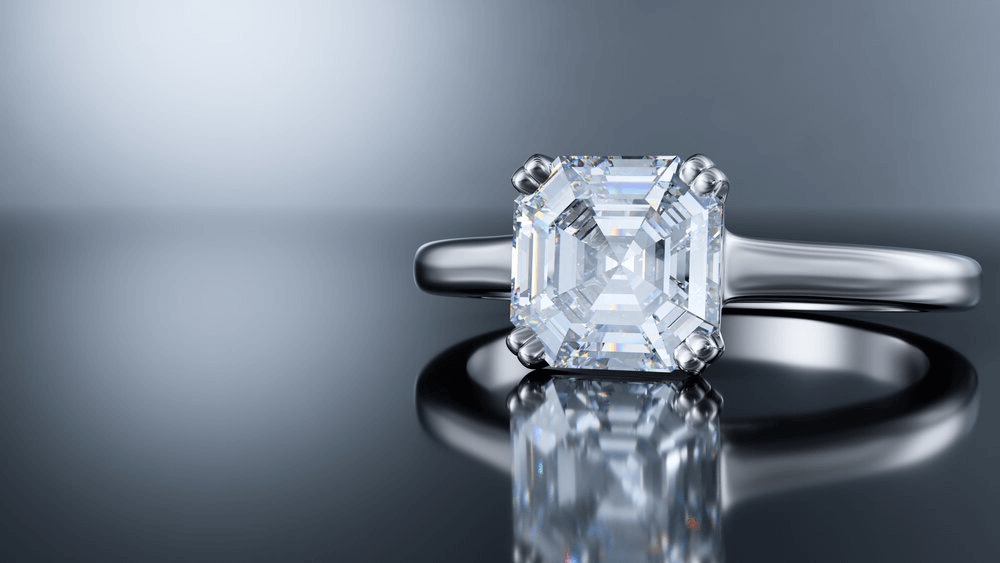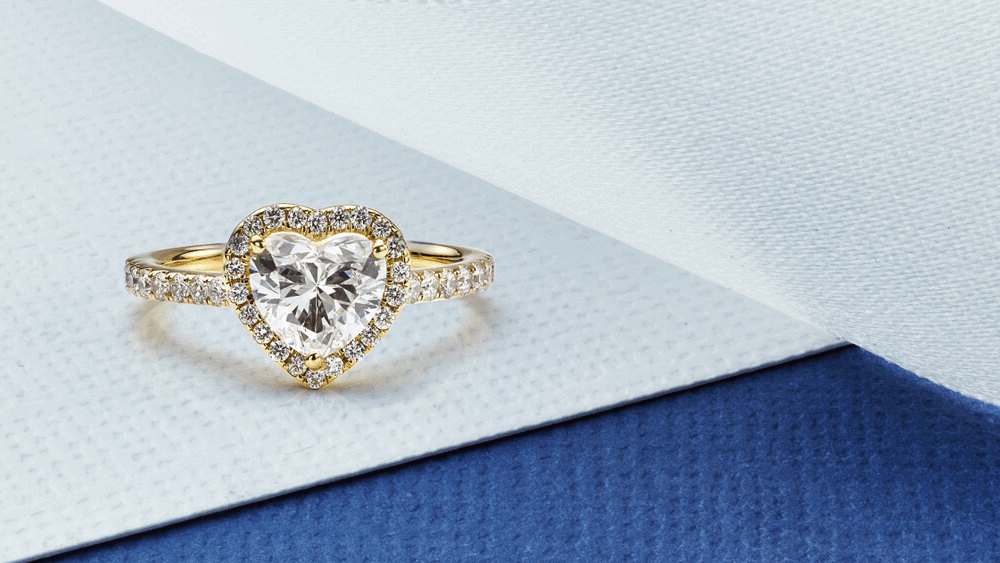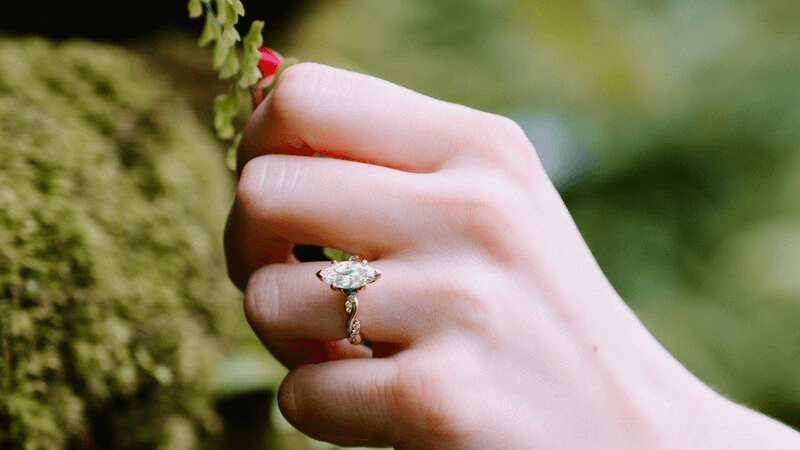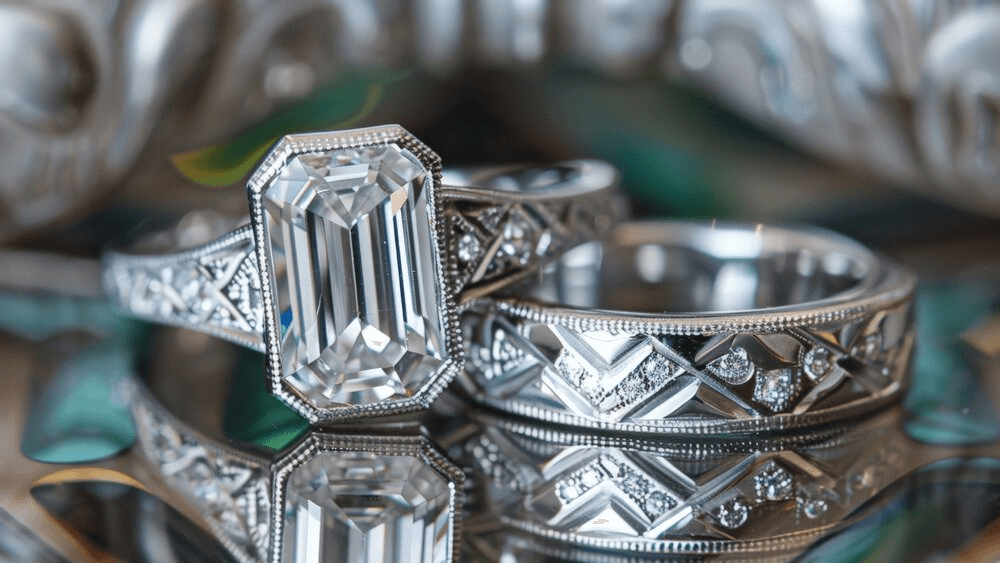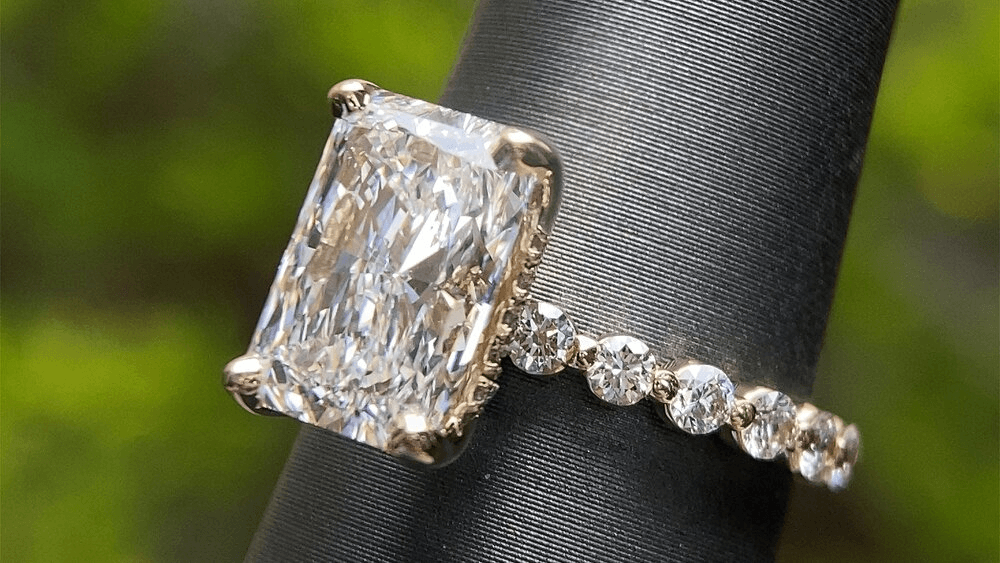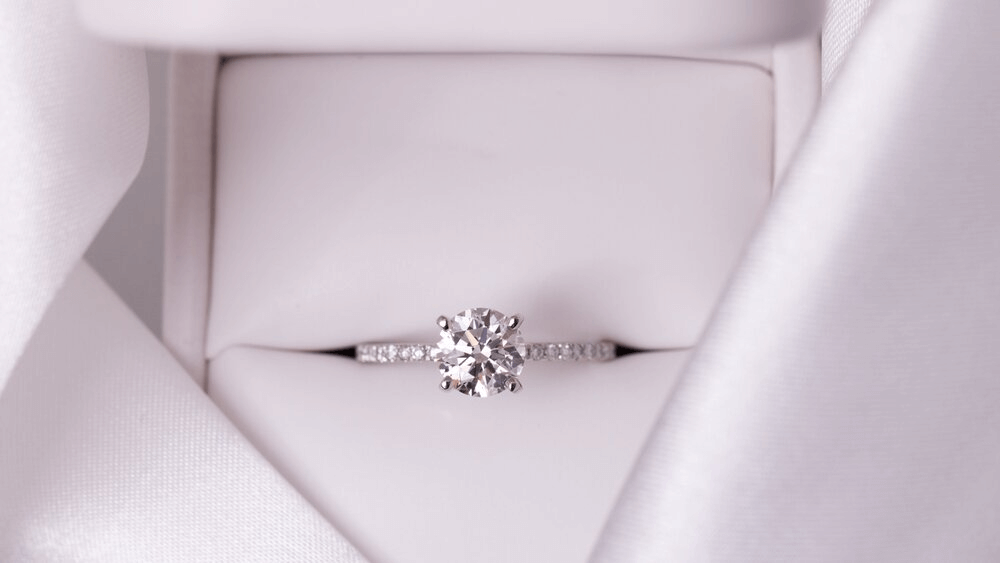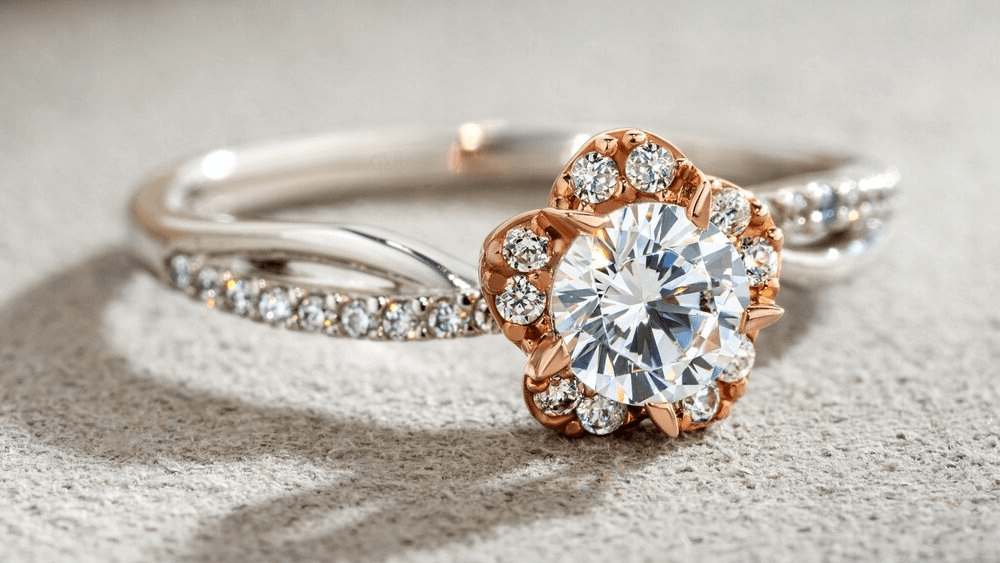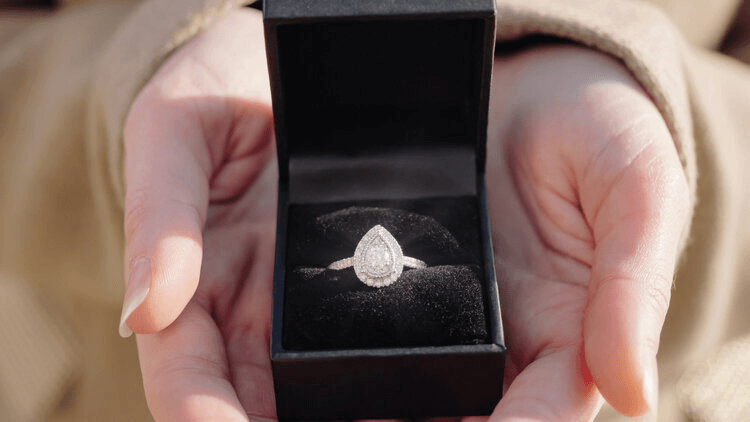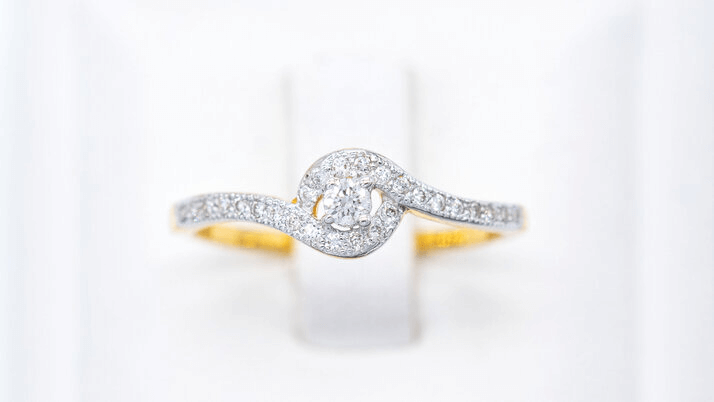The Secret to Dazzling Split Shank Engagement Ring Settings!

By Gary A.

Edited by Olivia H.
Published Aug 17, 2021
Edited on Dec 18, 2024
A split shank engagement ring adds a stunning architectural flair to any design, elegantly framing the center diamond while creating a more dramatic and luxurious look.

- 7 Quick Tips for Buying a Split Shank Engagement Ring
- Introduction
- The Essence of the Split Shank Design
- Popularity and Trend Analysis
- Key Considerations in Design: The Durability of the Split Shank Engagement Ring
- Cost Considerations: Material and Metal Choices.
- Split Shank Impact on Diamond Appearance
- Our Expert Take
- 10 FAQs
Before we dive deeper into the specifics, here are some practical tips to help guide your decision-making process:
7 Quick Tips for Buying a Split Shank Engagement Ring
Navigating the world of split shank engagement ring settings can be overwhelming. Here are some essential tips to guide you through the process, ensuring you make a well-informed decision.
- Tip 1: Understand the Structural Integrity: Split shank designs, with their unique split in the band, require careful examination of their structural strength. Ensure that the split doesn’t compromise the ring’s durability. The shanks should be sturdy enough to support the center stone securely, especially if you’re opting for a larger diamond.
- Tip 2: Proportion and Balance: One of the key aspects of choosing a split shank setting is ensuring that the proportions are harmonious. The width and style of the split should complement the size and shape of the center diamond. A well-proportioned split shank enhances the diamond’s appearance, making it appear larger and more brilliant.
- Tip 3: Metal Choice Matters: The choice of metal for your split shank engagement ring affects not just the appearance but also the ring’s longevity. Platinum and high-karat gold are popular choices for their durability and luster. Consider how the color of the metal harmonizes with the diamond and complements the wearer’s skin tone.
- Tip 4: Comfort is Key: While aesthetics are important, don’t overlook the comfort factor. A split shank ring should sit comfortably on the finger without pinching or feeling too loose. Remember, this ring is meant to be worn daily, so comfort should be a priority in your selection process.
- Tip 5: Match with Wedding Band: If you plan to wear your engagement ring alongside a wedding band, consider how the split shank will pair with it. Some split shank designs may require a custom-designed wedding band to fit snugly against it. Explore different combinations or consider a bridal set to ensure a seamless match.
- Tip 6: Pay Attention to Detailing: Split shank settings often feature intricate designs, such as pave diamonds or engraving. Examine these details closely to ensure they are well-crafted. The intricacies should enhance the ring’s beauty without overpowering the center stone.
- Tip 7: Maintenance and Care: Given the intricate nature of split shank settings, they may require more maintenance to keep them looking their best. Ensure that you understand how to care for and clean the ring, particularly if it features delicate detailing or pave set diamonds.
Now that you’ve got these practical tips, use Jeweler AI below to find the perfect engagement ring that suits your style and budget:
Introduction
For anyone with no real experience in picking out fine jewelry, it’s easy to fixate on that center diamond, and perhaps the more intricate details and accent stones that surround it, and to leave the band itself until last.
This part of the ring is known by jewelers as the ‘shank’. It is what encircles the finger, and offers the support to the diamond on top. While some designs leave the shank plain – or even prioritize making it as inconspicuous as possible, a design feature known as the skinny band engagement ring – many customers are now looking to make the shank a feature in and of itself, and to employ the jeweler’s skills in this craft to create something a lot more intricate.
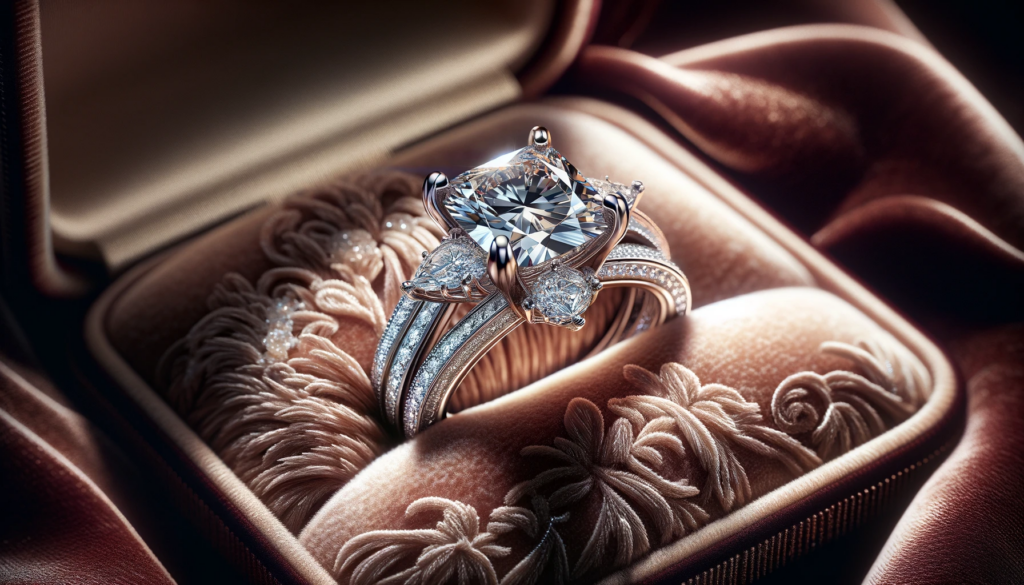
The Essence of the Split Shank Design
Rather than featuring a solid band, a ring with a split shank will be parted from the shoulder of the ring (where it joins with the center diamond or diamonds) and create a noticeable gap through which the finger is slightly visible.
The result is a highly aerodynamic, flowing shape – one that offers a little more versatility, especially when it comes to sparkle. It effectively gives the jeweler twice as much surface area to work with – a great option if you’re using a pavé setting on the shank.
The distinctive ‘V’ formed by the two halves of the shank can be very wide, or it can be very narrow – almost too narrow to show any of the finger within the gap.
The space created between them will be determined by the width of the shank, and may need to be widened if the center diamond is particularly large. It’s all about creating the right proportions to make that center stone as impactful as possible.
Similarly, the split can occur very close to the center stone, or further back. This placement will also help to determine how wide the ‘V’ of the split shank becomes before it reaches the main setting.
Understanding the Basics
On the finger, much of the shank will be on the side of the palm, though the shoulders of the shank appear at the top of the finger, on either side of the center setting. However, the shank has no specific appearance; it can be modified in any number of simple or intricate designs.
From the cathedral setting to an undecorated band just a few millimeters wide, a ring shank can be tailored to look however you want it to look.
Some shanks aren’t even round, though this is the most comfortable shape to wear around the finger’s circumference.
There are no rules when it comes to the ring shank. You can use our engagement ring search engine to get a good idea of how the shank can be used to amplify or simplify any design.
Popularity and Trend Analysis
Split shanks are very popular, thanks to a number of prominent celebrities getting paparazzied wearing split shank engagement rings – and, of course, the versatility of the design for anyone looking to make a statement.
The split shank has been around for many years, but plenty of attention within the media has made it a firm favorite over the past two decades or so.
Celebrity Influences
Most famously, Beyoncé’s hugely influential emerald cut diamond engagement ring featured a split shank, with each shank featuring a sparkling micro-pavé setting. That fact alone should be seen as a ringing endorsement for this setting by anyone still on the fence.
On a more personal level, those looking to create an ornate and intricate ring with plenty of sparkle will find this design perfectly adaptable. The split shanks can be created from a combination of two contrasting metals, like rose and white gold or yellow gold and platinum, or kept uniform for a more traditional look.
Key Considerations in Design: The Durability of the Split Shank Engagement Ring
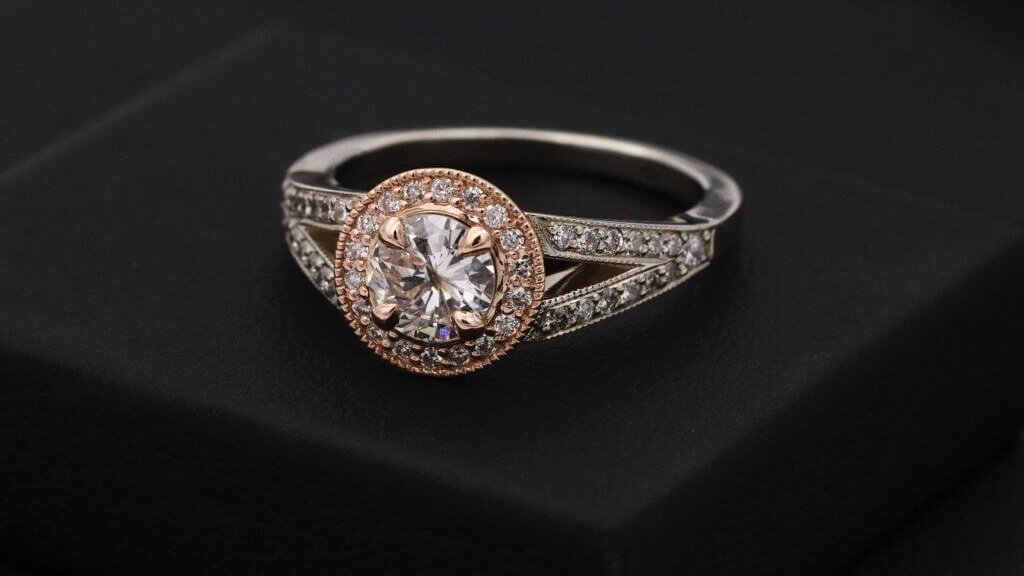
Any shape can work with a split shank, although the results will look entirely different – a fact which stands as testament to the versatility of this setting style.
From a plain, Round cut solitaire diamond to an ornate Cushion cut diamond set within a pavé halo, the split shank is a style that lends itself to any cut or size of diamond – just so long as it’s designed with the right amount of expertise and artistic flair.
This is probably one of the reasons the split shank engagement ring setting is so popular today – while distinctive, the results of using this design are as unique as the diamond itself, and jewelers love to explore the full potential of this style.
The Split Shank vs The Wide Shank
Unlike the split shank, a wide shank ring will feature a band that is wider than the center setting itself. The shank will not be split – instead, it will be forged from a much larger piece of solid metal.
A wide shank may feature a few intricate designs of its own, such as pavé diamonds, or may be left plain in order to make a pretty big statement – literally and figuratively.
This design is pretty divisive, as it goes against the grain – and a few of the more ‘deep-seated’ rules of jewelry design – by overwhelming the center diamond and setting with the shank.
The results can be pretty spectacular, but certainly aren’t for everyone.
Cost Considerations: Material and Metal Choices.
In all likelihood, a split shank setting of gold or platinum will be more expensive than a plain band of gold or platinum, partially because of the additional metal required, and partly because of the extra craftmanship needed to execute this design.
There is no set price for any of the different types of ring settings. While this may seem like an added complication, it’s actually pretty useful – it means you can work with your jeweler to get the design you want to be accommodated within the budget you have.
Let’s say your budget can’t stretch to the mixed metal platinum and 18 karat gold split shank design you want. You can bring the price down by replacing that platinum with white gold – and a lower karat at that – until you’ve got something you’re totally happy with, and able to pay for without emptying your savings account.
As with any ring, a part of the price of the split shank engagement ring setting will stem from the jeweler’s time and craft, which means that this part of the cost will probably be higher than it is for a simpler design. But, like always, the final price tag depends on the diamond – its size and quality – so don’t focus too hard on changing the design if the price isn’t quite where it should be.
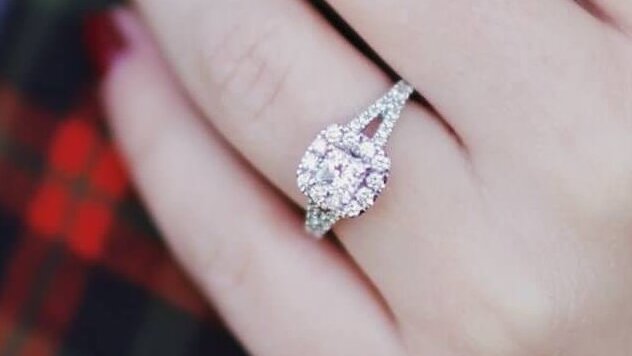
Split Shank Impact on Diamond Appearance
Provided the diamond isn’t on the small side, a split shank can make the diamond look bigger.
While the split shank is the opposite of the tapered shank – which can make a diamond look more dominant by narrowing the shank around it – it can also give the center setting and stone more ‘weight’ by drawing the eye to it, and creating an elevated look around that main focal point.
Remember that the ways a split shank will complement a modest solitaire diamond will differ significantly to the ways this setting can complement a more ornate setting, which will give the two shanks more space to ‘spread’ without growing wider than the center diamond.
Our Expert Take
This design remains a firm favorite in the world of fine jewelry, and, while it makes a statement, it’s subtle enough to never go out of style.
You don’t need to be led by the split shank’s star-studded status to appreciate quite how beautiful and versatile this setting is. And, while the simplicity of a plain or skinny band engagement ring can never be replaced, there are plenty of us out there looking for a little something more when we start to think about our own engagement rings.
Our advice? Look at as many different styles as possible. This design can be used in so many different ways that, even if you’re on the fence right now, a little research will go a very long way when you’re finally ready to start browsing ring designs.
10 FAQs
- Q1. What Is a Split Shank Engagement Ring?
- A: A split shank engagement ring features a band that splits into two as it approaches the center stone, creating a unique and often more elaborate design.
- Q2. Are Split Shank Engagement Rings More Expensive?
- A: They can be, depending on the complexity of the design and materials used. The additional craftsmanship and potential for more metal and accent diamonds can increase the price.
- Q3. Can Split Shank Rings Be Resized?
- A: Yes, but it can be more challenging than resizing a standard ring due to the design. It’s important to consult with a skilled jeweler for resizing.
- Q4. Is a Split Shank Setting Suitable for All Diamond Shapes?
- A: Yes, split shank settings can complement various diamond shapes, but the design should be chosen to enhance the specific shape of the center diamond.
- Q5. How Do I Choose the Right Metal for a Split Shank Ring?
- A: Consider durability, color preference, and lifestyle. Platinum and white gold are popular for their strength and neutral hue, but rose and yellow gold can add a warm contrast.
- Q6. Do Split Shank Rings Require Special Care?
- A: Yes, they may require more meticulous cleaning, especially if the design includes intricate details or pavé settings.
- Q7. How Does a Split Shank Ring Affect the Appearance of the Diamond?
- A: A split shank can make the center diamond appear larger and more prominent, especially if the shank is set with additional diamonds.
- Q8. Can Split Shank Rings Be Paired With Any Wedding Band?
- A: Not all standard wedding bands may fit well with a split shank engagement ring. It’s often recommended to choose a band that complements or is designed to fit with the specific engagement ring design.
- Q9. What Are the Pros and Cons of a Split Shank Engagement Ring?
- Pros: Unique and eye-catching design, can make the center stone appear larger.
- Cons: Potentially more expensive, can be harder to resize, and requires more maintenance.
- Q10. Is a Split Shank Engagement Ring a Timeless Choice?
- A: While trendy, a well-designed split shank ring can be a timeless choice, especially when it reflects the wearer’s personal style and is crafted with classic elements.
Discover your perfect split shank engagement ring setting with Jeweler AI, where elegance meets personalization. Start your journey today!
FOLLOW-UP GUIDE SERIES





